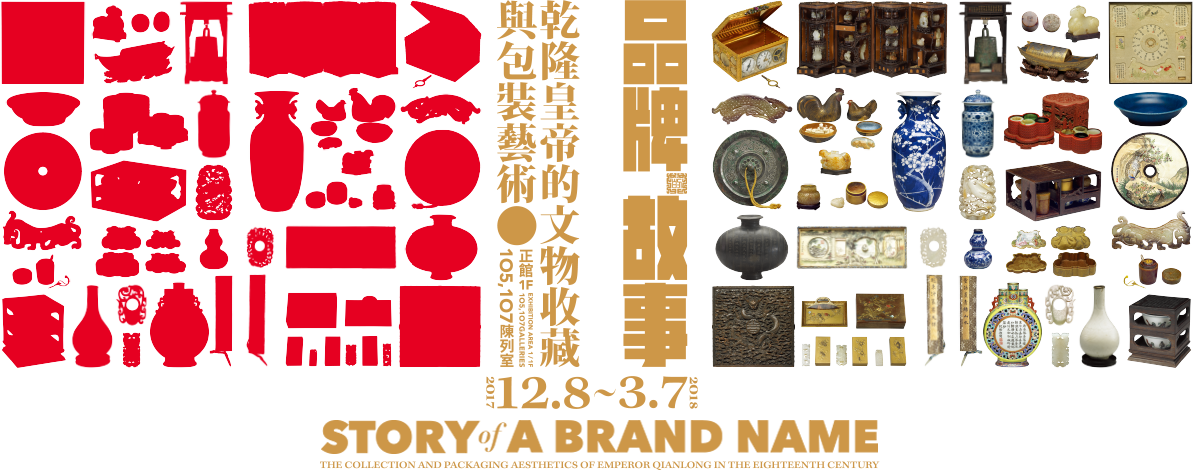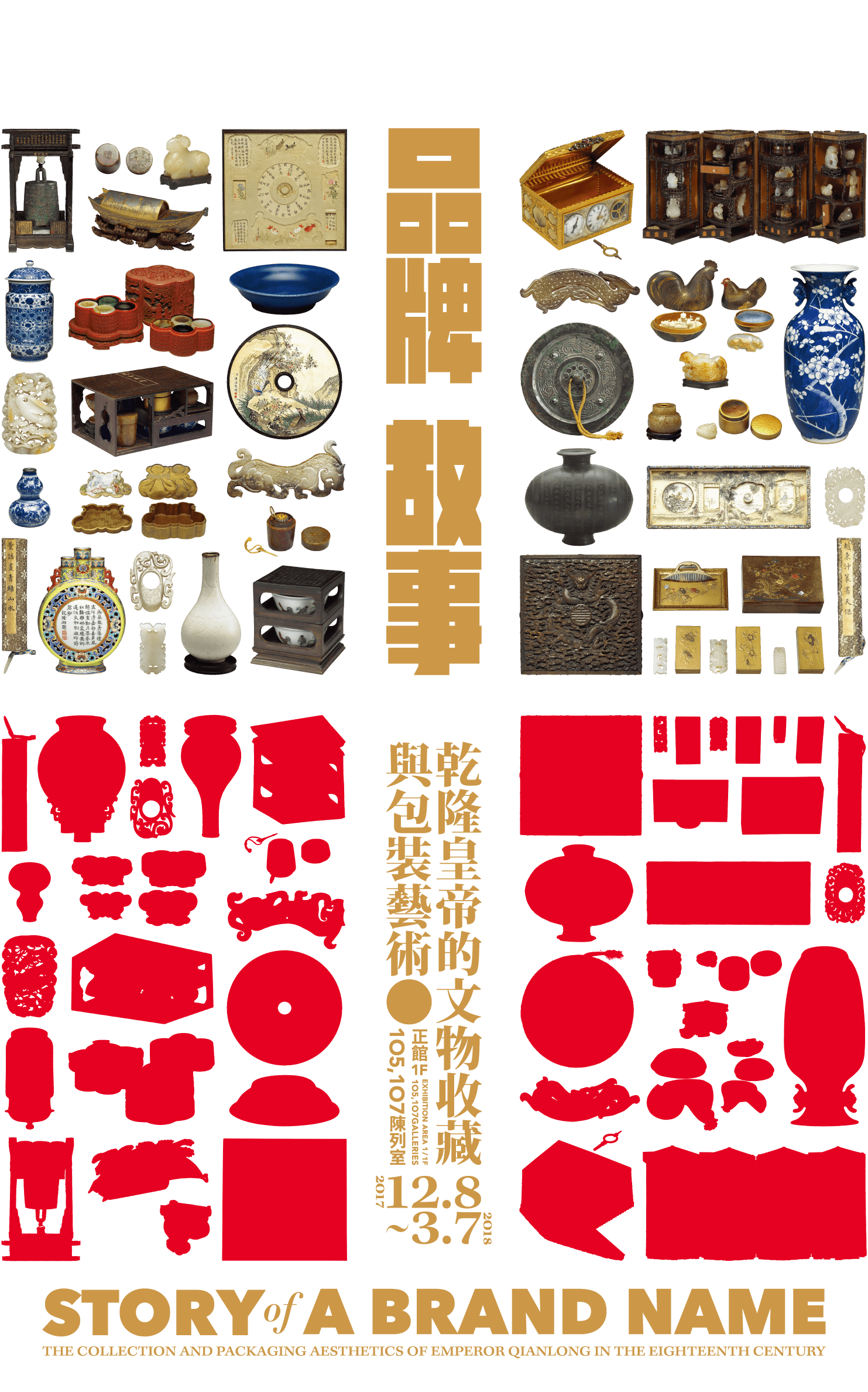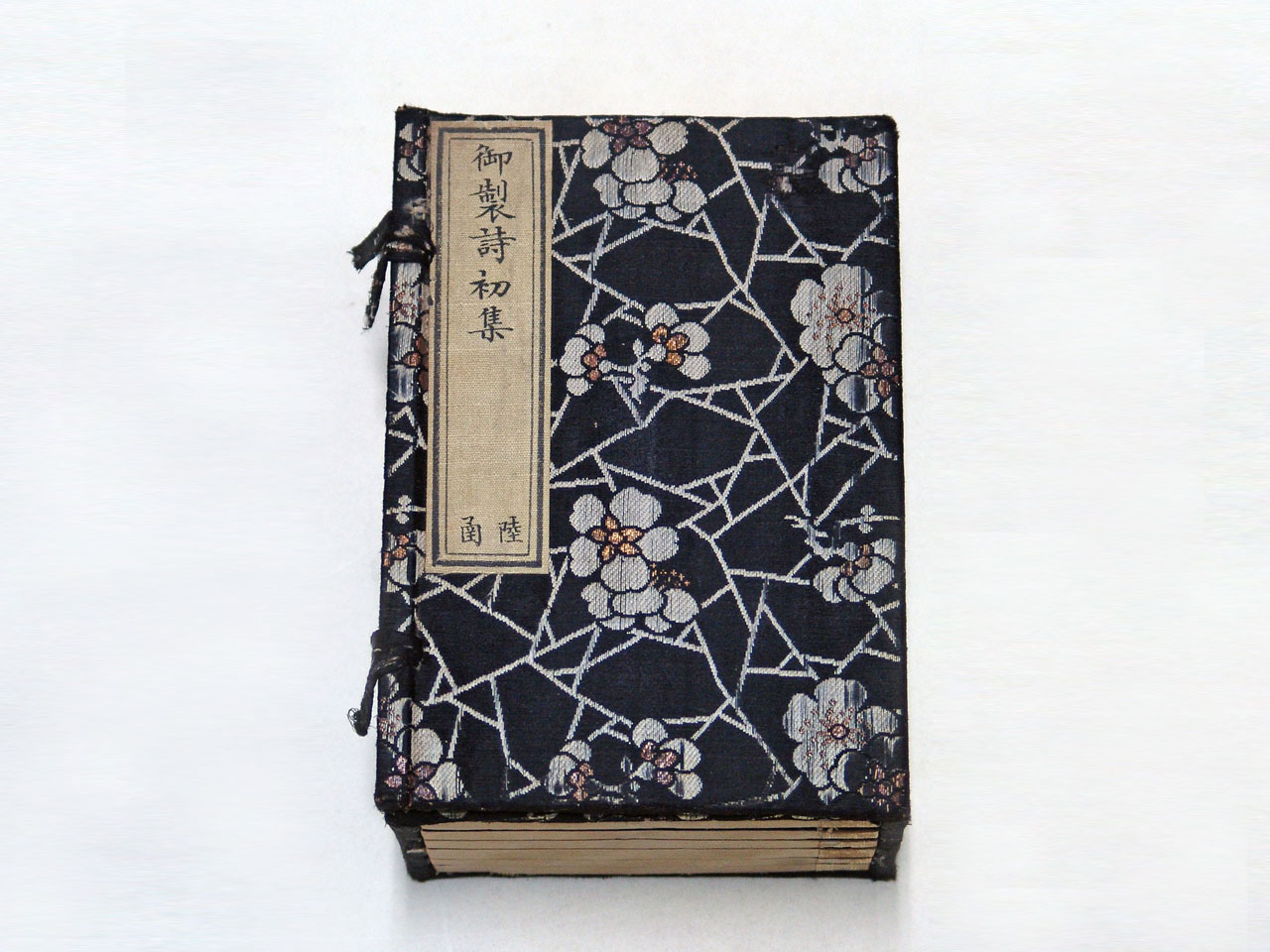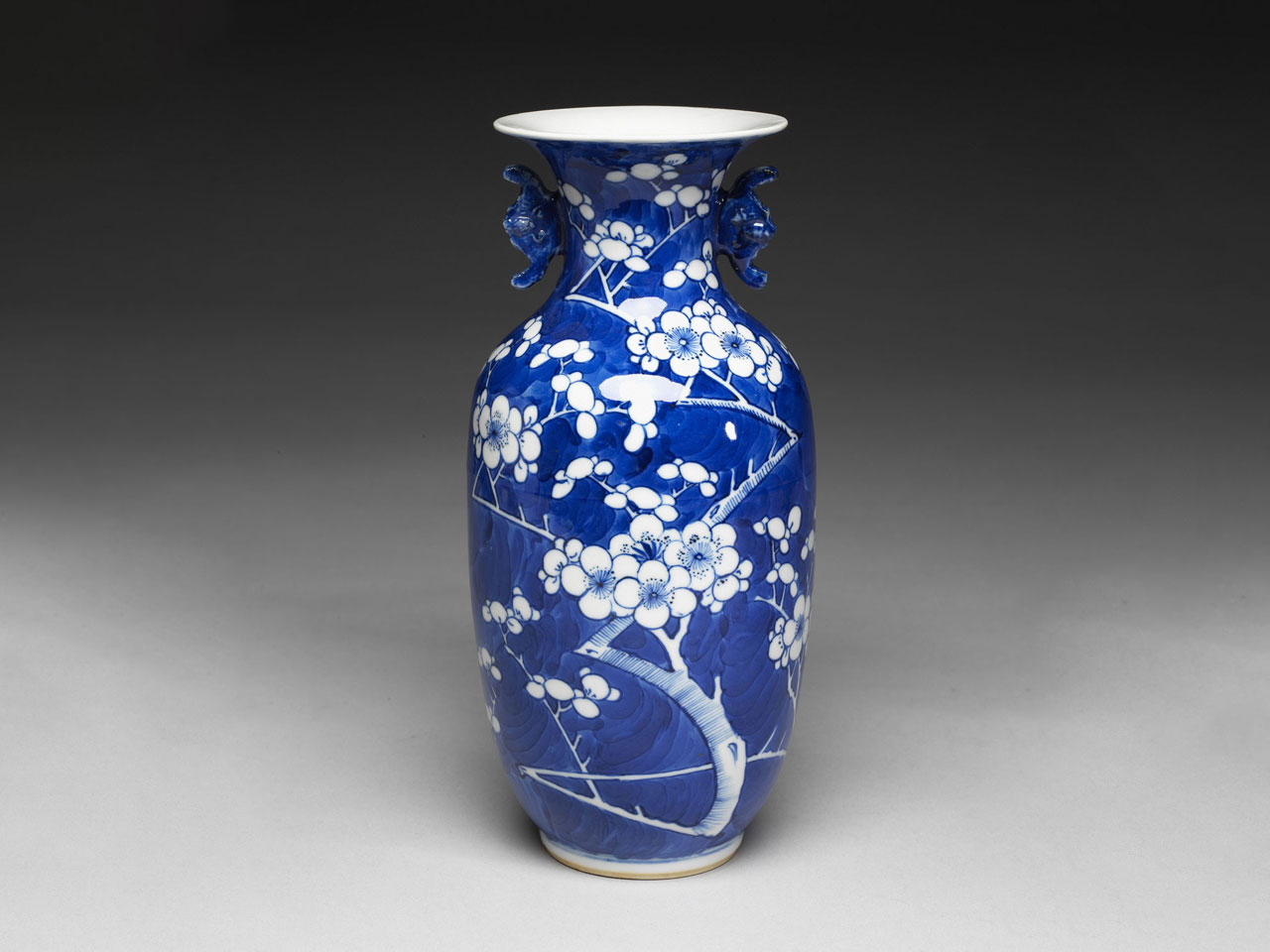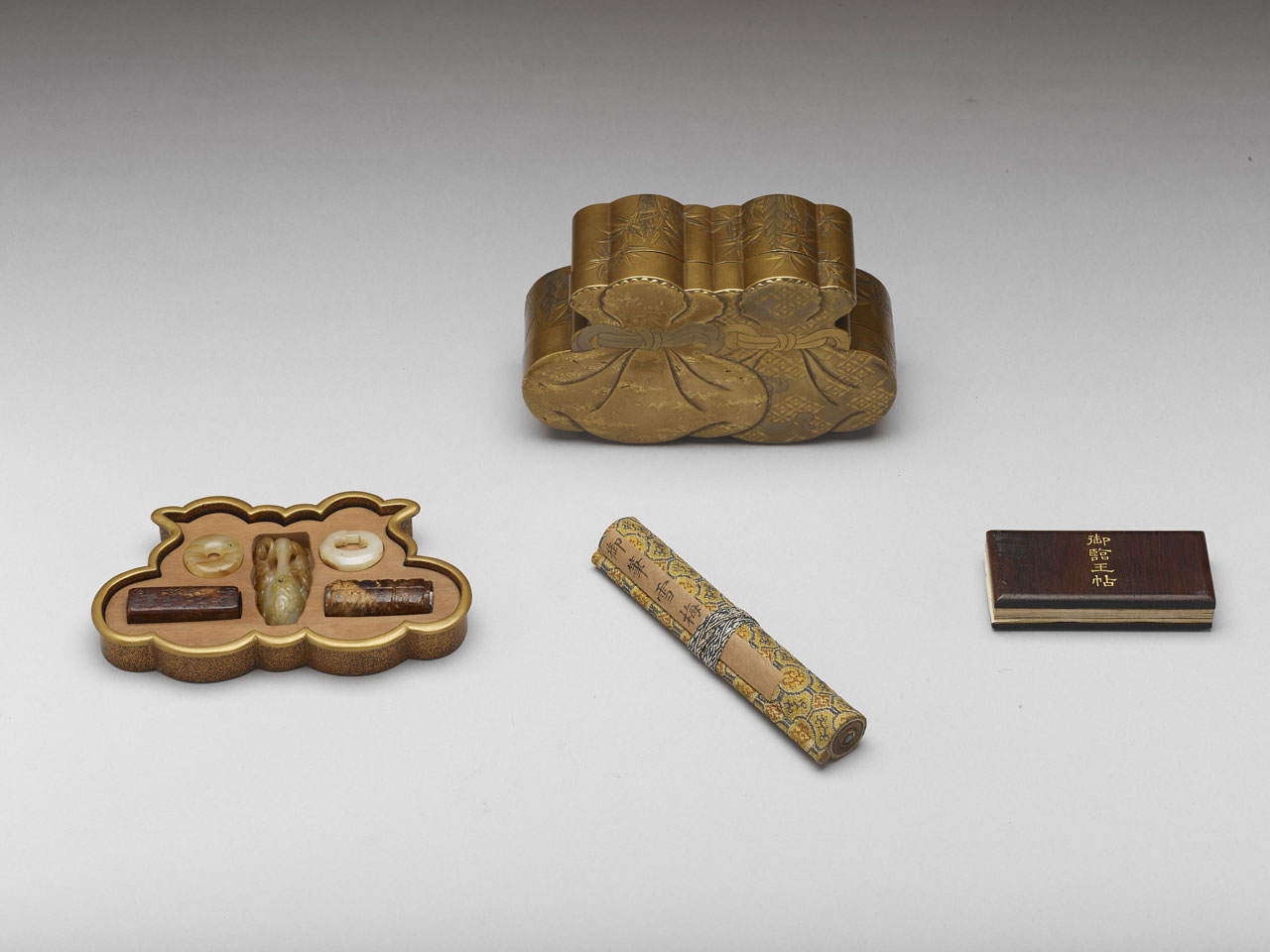The Qianlong emperor treasured his possessions dearly; packaging in myriad variety specifically made for each artwork was consistently produced throughout the Qianlong reign. The details of packaging were occasionally re-modified to ensure that the imperial collections and its corresponding packaging would compliment each other splendidly, and generate the bountiful beauty and unique art of packaging culture. As can be seen among the works exhibited, various framing methods applied on calligraphy works and paintings with tapestry, pins that secure the inner cases, fabric cases and wood cases carefully selected to match the mounting style, different binding techniques of albums and books or innovated imperial miniature scripts with textile covers that suitable for transportation, made-to-measure boxes for jade wares and bronze wares that imitated the forms of book albums, painting scrolls and Chinese zithers. As well as lacquer wares from Japan transformed into exquisite small containers, demonstrate that the Qianlong emperor's appreciation and connoisseurship for his collections derived from his love and repeated examinations of his collection through the intricate details and meticulous patterns on the tapestry. Hence are the abundant versions of packaging that serve the functions of decorative, display, and storage.
-
Yu Zhi Shi Chu Ji
- Imperial Poem, volume 1
- Wrote by Gaozong, compiled by Jiang Pu and others, Qing dynasty
- Qing court miniature manuscript, the 14th year of Qianlong reign (1749)
-
Vase with bat-shaped handles and white plum-blossom decoration on a blue glaze ground
- Qing dynasty, Kangxi reign (1662-1722)
- H.23.4cm, diam. of mouth 8.8cm, diam. of base 6.3cm
This vase has a flared mouth connected to the short neck, where the bat-shaped handles are placed on the opposite sides. The round shoulder sits on the cylindrical body and the foot rim is placed at the bottom. The white glaze is applied on the inside of the vase while the exterior covered in copper blue glaze as the ground. Two branches of plum with flowers and flower buds were painted on the blue ground. The footwall and the base are glazed in white while the foot is unglazed, and two blue circles are painted on the base.
The ice-plum-blossom pattern symbolized integrity had been popularised since the late Ming dynasty to the early Qing dynasty, and frequently seen on craft works in diversity. The Archives of the Imperial Workshops (Huojidang) recorded that in the third and sixth year of the Qianlong reign (1738 & 1744), the emperor issued several imperial edicts to have the paper painted with the ice-plum-blossom pattern. The pattern can also be seen on copper wares with painted enamels that had produced during the Qianlong reign. These examples demonstrate that the ice-plum-blossom pattern was an official pattern approved by the Qianlong's court. To place the Imperial Poem, volume 1 that mounted with tapestry into this context, the reason behind the emperor's decision of choosing the tapestry with the ice-plum-blossom pattern is revealed.
Dual sack-shaped lacquer container with bamboo and grass decoration
- Contains 5 jade pieces, and Emperor Qianlong's imperial calligraphy album and painting scroll
- Qing dynasty, Qianlong reign (1736-1795)
- 12.5 x 7.5 x 4.5 cm
The lacquer boxes from Japan were applied in various packaging of the Qing court. Antiques were stored with lacquer boxes in variety. The selected exhibits are relitively smaller in size and with different styles.The use of separating plates and tapestry cushions to store the artworks was the signature of the Qing court's packaging. The dual sack-shaped lacquer container with bamboo and grass decoration originally came from the curio shelf (boguge), and the "ge" stood for the shelf to display the antiques and curios. This lacquer box has two tiers. The jade wares were separated by wood-base plates and stored on the upper layer, and the plates were decorated with Western figures in falangcai enamel paint. The 'imperial manuscript of Plum-Blossoms in the Snow' and the 'imperial transcription of Wang Xizhi's calligraphy work' by the Qianlong emperor were placed in the bottom layer of the box.
